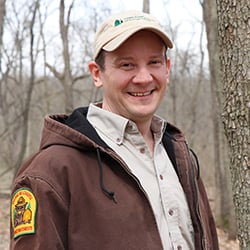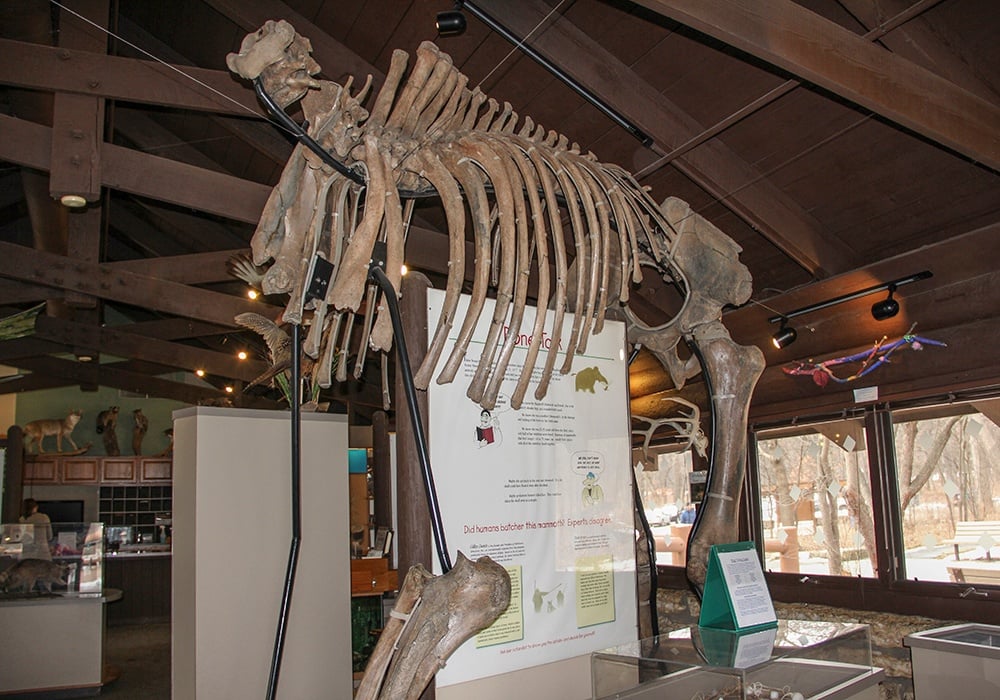
It started like a normal day for Gary Jones, a heavy equipment operator for the DuPage Forest Preserve District.
Jones was assigned to dig up clay from an old bean field in an area now known as McKee Marsh at Blackwell Forest Preserve on a partly cloudy day on Tuesday, June 21, 1977.
It was in the upper 70s and the bean field lacked tree cover, so Jones chose a shady spot near a large cottonwood tree to begin digging. Soon after he started, he noticed several large bones sticking out of the pile of soil, so he immediately stopped and contacted his supervisor.
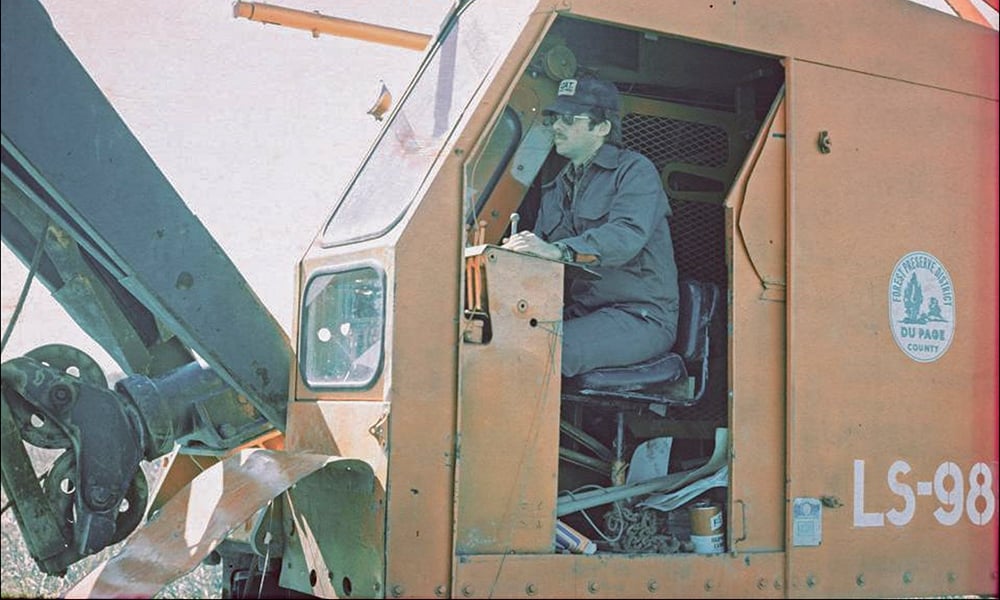
Heavy equipment operator Gary Jones was digging up the clay at Blackwell on June 21, 1977 when he uncovered several large bones. Little did he know at the time what he had unearthed.
A Mammoth Discovery
Early the next morning, District educational and scientific staff arrived at the site to plan their strategy. Upon inspection, they determined the bones were of a prehistoric elephant of some kind. Since there had already been several mastodon finds in the Chicagoland region, they thought it probably was a mastodon.
Experts from the Field Museum and Northern Illinois University were contacted, but none were available to come to the site. They could only offer some advice.
Staff were instructed to uncover the bones slowly and carefully without removing them. It was a wet, muddy process that required digging through heavy clay down to the bones. They then used their hands to expose the bone without damaging it. Maintenance staff set up several pumps at the dig site to help remove water that constantly filled the pit.
Forest Preserve District naturalist Mike Riddet took extra care to lay out a grid and mark the location of each bone found and exposed in each of the grid quadrants. These drawings helped show scientists the position of the bones in the ground.
To protect the bones from outside conditions, staff covered them with wet burlap. Before they left the site at the end of the day, they turned off the pumps and flooded the pits to keep the bones from drying out and deter late-night archeologists.
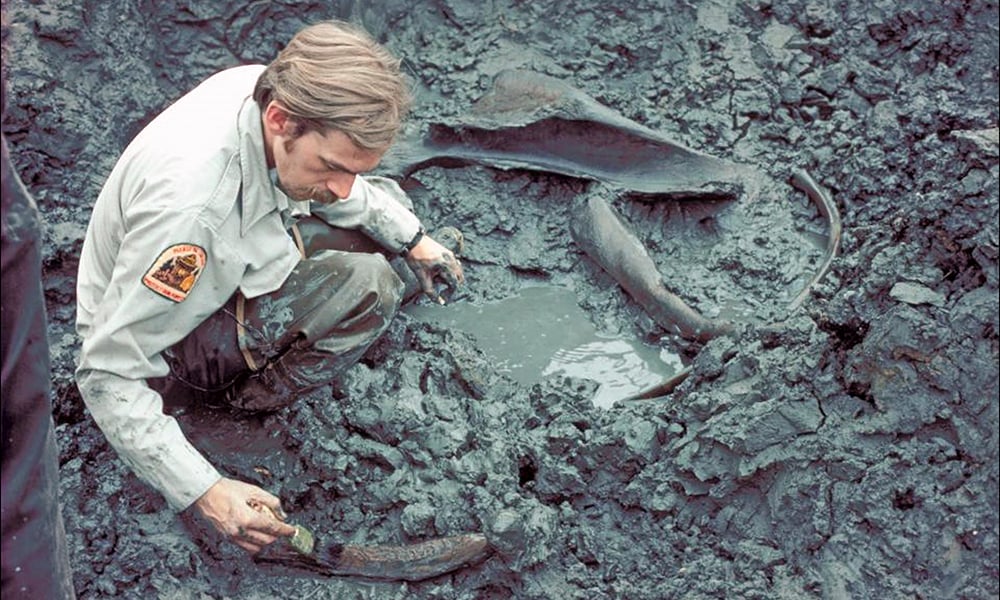
District naturalist Mike Riddet cleans off a bone, believed to be an elephant bone. They know that a mastodon was found in the 1960s in Glen Ellyn, but aren't sure what they've unearthed.
More Visitors
Dr. James Springer of Northern Illinois University arrived on Thursday, June 23 and tried to find links between man and the prehistoric elephant. Unfortunately, no human artifacts were ever found at or around the dig site. He confirmed that the Blackwell clay contained a significant find and promised to return the next day with a crew of NIU students and scientists.
Meanwhile, crews from local television stations arrived to report on the discovery and the excavation process. They arrived dressed in shiny shoes and neatly pressed pants, but by the time they finished, their shoes and pants were caked with mud and clay.
Dr. Springer returned on Friday, June 24, with his crew of students to photograph and measure the exposed bones as the digging continued. The news reports prompted more curious visitors to come to the dig site. Forest Preserve District naturalists put together interpretive talks and fact sheets to hand out to visitors.
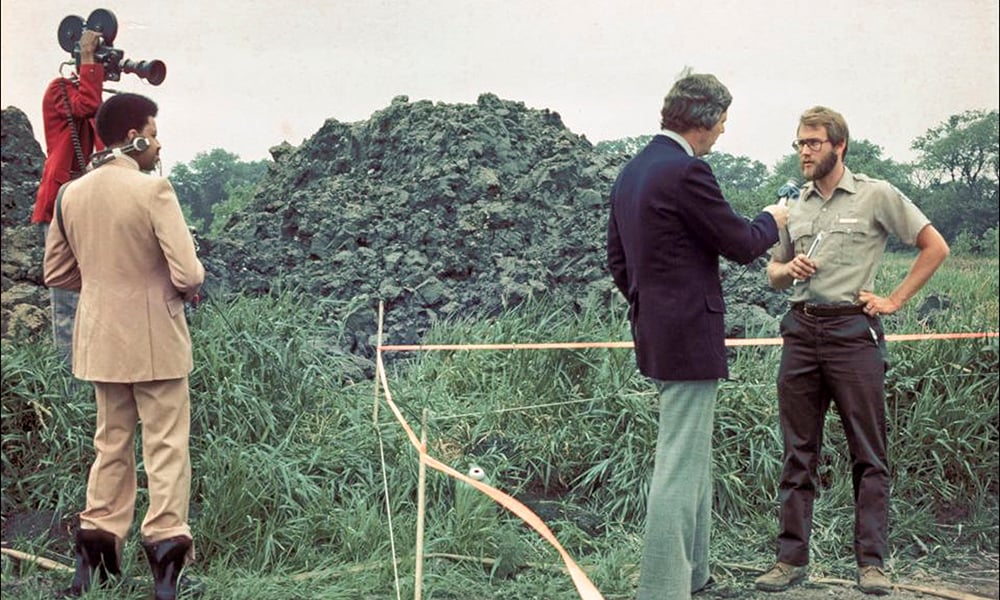
It didn't take long for the media to descend on the scene. Here WBBM-TV's Burleigh Hines (left in tan suit) and WLS-TV's Jim Gibbons (blue jacket) interview Dan Gooch, who was a District naturalist at the time. Gooch later went on to serve as District executive director.
The News Spreads
By the first weekend after the discovery (June 25-26), more than 4,000 people came out to the site. Among the many visitors, one was a paleobotanist from a Michigan university. He gathered soil samples to analyze the pollen in an effort to date specimens through pollen grain identification.
Digging continued for several more weeks. During this time the Illinois Geological Survey took a bone sample so they could try to date it through a radioactive carbon 14 study. The study results concluded the soil was more than 15,000 years old, and the bones were around 13,130 years old.
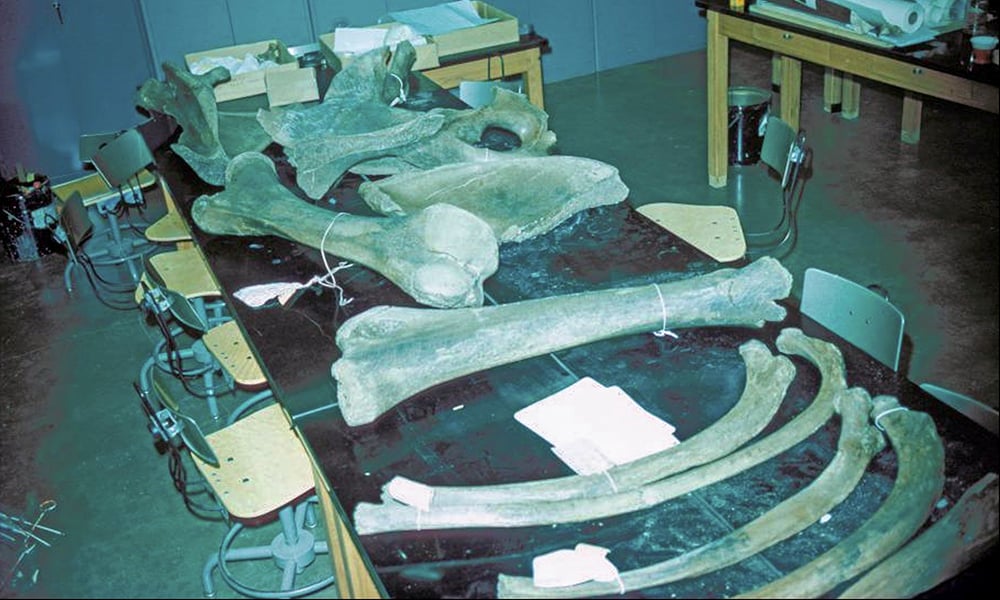
The excavated bones laid out at Northern Illinois University.
Findings and Display
The digging was completed by July 15, 1977, and the bones have all been packed up and delivered to the NIU archeology lab. Here the bones were preserved, inventoried, tagged, and studied further. It was determined that the find was in fact a woolly mammoth due to the triangular space in the vertebrae.
About three quarters of the mammoth was found. The skull, tusks and most of the forelegs were not recovered. The bones that were recovered are not fossilized because of the clay material they were buried in and the lack of bacterial action in that clay.
Today, you can see the actual Blackwell woolly mammoth skeleton in the Fullersburg Woods Nature Education Center in Oak Brook. The center is open Monday through Saturday from 10 a.m. to 3 p.m.
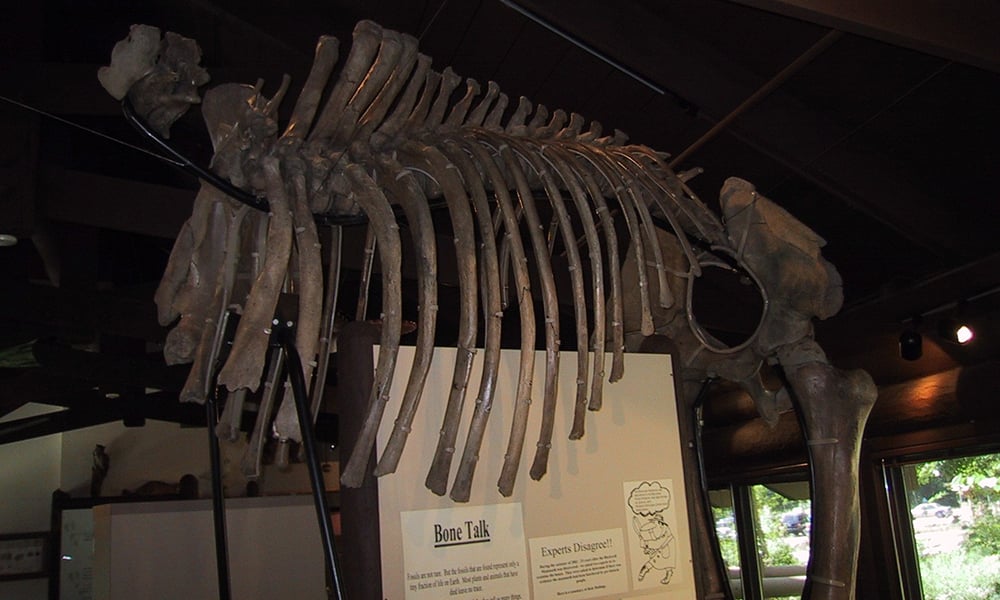
The 13,000-year-old woolly mammoth is now on display at Fullersburg Woods Nature Education Center in Oak Brook.
About Hidden History blogs
From glaciers to mounds, mammoths and farms, each month we highlight the often-overlooked history of our preserves and provide context to deepen your connection to the land, as well as tell the stories revealed to us through the objects and formations left behind. Stay tuned as members of the Forest Preserve District's collections committee bring you closer to your community through story every month.
Dave Andrusyk
